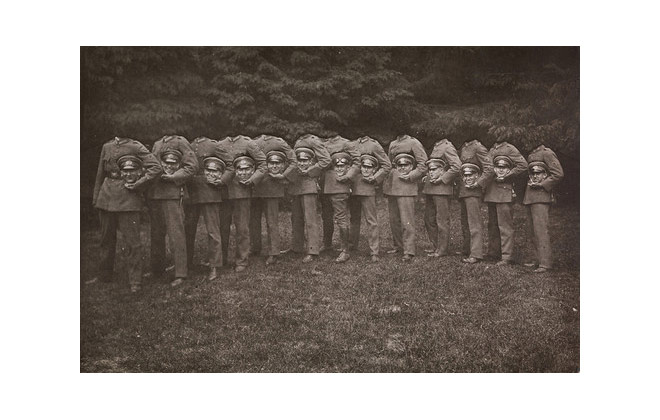
|
|
|

The manner in which men and women evaluate potential romantic partners has been a prominent topic of evolutionary psychology for the past several decades. The impact of an individual’s sexual history on his or her desirability to potential mates has traditionally been an area of particular interest. Numerous studies have shown that having many past sexual partners adversely impacts one’s desirability as a potential mate.
This finding has been described as a manifestation of psychological mechanisms designed to avoid cuckoldry and ensure selection of more committed partners. If this explanation is correct, then the amount of time elapsed since the end of one’s previous relationship should also influence his or her desirability as a mate; specifically, a man’s or woman’s recently-ended intimate relationship could pose a risk to their potential partner’s reproductive fitness through resource diversion or cuckoldry, respectively. The recency hypothesis has not been empirically examined and is the focus of the present investigation.
{ Journal of Social, Evolutionary, and Cultural Psychology | PDF }
psychology, relationships |
January 29th, 2013

A study published in 2003 supported this idea: participants who listened to music with the intention of feeling happier actually ended up feeling less happy than others who merely listened to the music with no happiness goal. […] But now a new study has come along which purports to show that trying deliberately to be happier is beneficial after all.
{ BPS | Continue reading }
psychology |
January 29th, 2013

The Government of Antigua is planning to launch a website selling movies, music and software, without paying U.S. copyright holders.
{ TorrentFreak | Continue reading }
During a meeting in Geneva today the World Trade organization (WTO) authorized Antigua’s request to suspend U.S. copyrights. The decision confirmed the preliminary authorization the Caribbean island received in 2007, and means that the local authorities can move forward with their plan to start a download portal which offers movies, music and software without compensating the American companies that make them.
{ TorrentFreak | Continue reading }
U.S., law, within the world |
January 29th, 2013

A number of Instagram’s 90 million active users are in a confused panic after being locked out of their accounts over the weekend, and several seem to believe they’ve been hacked. […]
Your account has been secured and requires account validation. Please login to Instagram.com from your desktop computer to validate your identify.
The desktop validation process then requires the user to upload a photograph of a government-issued photo ID by February 1 — a puzzling requirement for many thread participants, who worried that a hacker was attempting to gain access to their personal information. Which is not the case.
“Instagram occasionally removes accounts due to violation of terms and, depending on the violation, may ask people to upload IDs for verification purposes,” a Facebook spokesperson told CNET. […]
Instagram, like Facebook, requires that its users are at least 13.
{ CNET | Continue reading }
social networks, spy & security |
January 29th, 2013

Cruentation was one of the medieval methods of finding proof against a suspected murderer. The common belief was that the body of the victim would spontaneously bleed in the presence of the murderer.
Cruentation was part of the Germanic Laws, and it was used in Germany, Poland, Bohemia, Scotland and the North-Americans colonies. In Germany it was used as a method to find proof of guilt until the middle of the 18th. century.
The accused was brought before the corpse of the murder victim and was made to put his or her hands on it. If the wounds of the corpse then began to bleed, or if other unusual visual signs appeared, that was regarded as God’s verdict (judicium Dei) announcing that the accused was guilty.
{ Wikipedia | Continue reading }
blood, flashback, law, weirdos |
January 28th, 2013

Regarding exorcism, the Catholic Encyclopedia says:
Exorcism is (1) the act of driving out, or warding off, demons, or evil spirits, from persons, places, or things, which are believed to be possessed or infested by them, or are liable to become victims or instruments of their malice; (2) the means employed for this purpose, especially the solemn and authoritative adjuration of the demon, in the name of God, or any of the higher power in which he is subject.
[…]
In contrast, the rationalist perspective presents historical and medically-based views of possession phenomena in terms of epilepsy, schizophrenia, and possession trance disorder (PTD), a possible variant of dissociative identity disorder. Nothing evil or supernatural takes over the identity of the person with PTD. Nonetheless, exorcisms performed on mentally ill people continue to this day. […]
In DSM-IV, spirit possession falls under the category of Dissociative Disorder Not Otherwise Specified, with more specific research criteria (but not an official diagnosis) fitting Dissociative Trance Disorder (possession trance):
Dissociative trance disorder: single or episodic disturbances in the state of consciousness, identity, or memory that are indigenous to particular locations and cultures. Dissociative trance involves narrowing of awareness of immediate surroundings or stereotyped behaviors or movements that are experienced as being beyond one’s control. Possession trance involves replacement of the customary sense of personal identity by a new identity, attributed to the influence of a spirit, power, deity, or other person and associated with stereotyped involuntary movements or amnesia, and is perhaps the most common dissociative disorder in Asia. Examples include amok (Indonesia), bebainan (Indonesia), latah (Malaysia), pibloktoq (Arctic), ataque de nervios (Latin America), and possession (India). The dissociative or trance disorder is not a normal part of a broadly accepted collective cultural or religious practice.
[…]
Will there be changes for Dissociative Trance Disorder (DTD) in DSM-5?
{ Neurocritic | Continue reading }
Linguistics, psychology |
January 28th, 2013

Evidence from a new study published in Science suggests that the One Child Policy in China is negatively affecting the personality of new generations. It claims that single children born under the policy are less trustworthy and trusting of others, more risk-aversive and pessimistic, less competitive and less conscientious.
{ Marianne Cezza | Continue reading }
photo { Mitch Epstein }
asia, kids |
January 28th, 2013

{ A cephalophore is a saint who is generally depicted carrying his or her own head. }
Linguistics, weirdos |
January 28th, 2013

At a 2010 tech conference, Siri co-founder Tom Gruber demonstrated the app’s reach: Telling the assistant, “I’d like a romantic place for Italian food near my office,” yielded an answer that seamlessly combined facts from Citysearch, Gayot, Yelp, Yahoo! Local, AllMenus.com, Google Maps, BooRah and OpenTable.
As conceived by its creators, Siri was supposed to be a “do engine,” something that would allow people to hold conversations with the Internet. While a search engine used stilted keywords to create lists of links, a do engine could carry a conversation, then decide and act. Had one too many drinks? The ability to coordinate a Google search for a ride home might elude you, but a do engine could translate a muttered, “I’m drunk take me home,” into a command to send a car service to your location. The startup’s goal was not to build a better search engine, but to pioneer an entirely new paradigm for accessing the Internet, one that would let artificially intelligent agents summon the answers people needed, rather than pull relevant resources for humans to consult on their own. If the search engine defined the second generation of the web, Siri’s co-founders were confident the do engine would define the third.
This Siri — the Siri of the past — offers a glimpse at what the Siri of the future may provide. […] Where we now see Siri as a footnote to the iPhone’s legacy, some day soon the iPhone may be remembered as a footnote to Siri.
{ Huffington Post | Continue reading }
technology |
January 28th, 2013

Men who were born without a sense of smell report having far fewer sexual partners than other men do, and women with the same disorder report being more insecure in their partnerships, according to new research.
The researchers don’t know why romantic difficulties could be tied to smell, but they say one possibility is that people with anosmia, or no sense of smell, are insecure, having missed many emotional signals all their life.
{ LiveScience | Continue reading }
photos { Sarah Pickering, Fuel Air Explosion (L), Land Mine (R) }
olfaction, sex-oriented |
January 28th, 2013

Dishonest behavior seems pervasive. For example, the estimated total damage to the American clothing industry from wardrobing—the habit of returning purchased clothes after wearing, amounts to $16 billion annually, and the damage to US companies from employee theft and fraud reaches an estimate of $994 billion a year. On an individual level, research on lying has found that people lie in some 30% of their daily interactions. In stark contrast to these findings, most people, including those who engage in the above practices, maintain a positive moral self-concept. If being moral is so highly valued in society, why then is unethical behavior so pervasive? And what determines its extent?
In this paper, we propose that the individual’s perspective is an important factor that affects moral behavior and determines its extent. We use the term perspective to indicate the size of the window through which individuals perceive and evaluate their choices.
{ Judgment and Decision Making | Continue reading }
ideas, psychology |
January 25th, 2013
 Robots Coming To U.S. Hospitals (approved by the FDA).
Robots Coming To U.S. Hospitals (approved by the FDA).
Robotic machine can produce six hamburgers a minute. [Thanks Tim]
Robots will offer such significant cost benefits over time that companies not heavily invested in robotics may find themselves at a huge competitive disadvantage.
Eating more fruit and vegetables may make young people calmer, happier and more energetic in their daily life, new research suggests.
Obese Drivers 80% More Likely to Die in Accidents.
In general, research suggests that expressing anger is helpful during a negotiation because it signals dominance and toughness. What happens when anger is not authentic?
Stress-related psychiatric disorders, such as unipolar depression and post-traumatic stress disorder, occur more frequently in women than in men. Emerging research suggests that sex differences in receptors for the stress hormones, corticotropin releasing factor and glucocorticoids, contribute to this disparity. [PDF]
Men Are More Likely to Commit Scientific Fraud.
Big data could soon be stored in a very small package: DNA. A team of scientists has demonstrated that storing information in synthetic DNA could represent a feasible approach to managing data in the long term, bumping aside the magnetic tape favored by archivists today.
UC Berkeley named one of nation’s fastest growing ‘sugar baby’ schools. SeekingArrangement.com organizes “mutually beneficial” pairings between students and older, more established individuals seeking to lavish a younger partner with gifts and money. [Thanks ZunguZungu]
Skinny motherfucker with the high voice Prince has crawled out of the bathtub to give an interview to Billboard. “I have a team of female black lawyers who keep an eye on such transgressions,” Prince says.
The Behaviors that Destroy Your Financial Health (and How to Avoid Them).
Business Cards of Famous People.
Dramatic Chipmunk.
every day the same again |
January 25th, 2013

People who identify as strong multitaskers tend to be impulsive, sensation-seeking and overconfident in their ability to juggle multiple tasks simultaneously. In fact, note the researchers in the latest issue of PLOS, the people who multitask the most are often the least capable of doing so effectively.
[…]
“The people who are most likely to multitask harbor the illusion they are better than average at it,” says Strayer, “when in fact they are no better than average and often worse.”
{ io9 | Continue reading }
buffoons, psychology |
January 25th, 2013

Research has shown that a number of factors, including body symmetry, perceived strength, vigour, skilfulness, and agility of movements, as well as increased variability and amplitude of the neck and trunk, can affect the attractiveness of dance moves. Perceived femininity/masculinity of body movement likely also plays a role.
Here, we compare comprehensive ratings of both male and female dancers’ opposite- sex attractiveness, including ratings of femininity/masculinity, with computationally-extracted movement features. Sixty-two heterosexual adult participants watched 48 short audio-visual point-light animations of eight male and eight female adults dancing individually to Techno, Pop, and Latin music. Participants rated perceived Femininity/Masculinity (as appropriate), Sensuality, Sexiness, Mood, and Interestingness of each dancer. Seven kinematic and kinetic features – Downforce, Hip wiggle, Shoulder vs. hip angle, Hip-knee phase, Shoulder-hip ratio, Hip-body ratio, and Body symmetry – were computationally extract- ed from the stimuli.
A series of correlations revealed that, for men watching women, Hip-knee phase angle was positively related to Interestingness and Mood, and that Hip-body ratio was positively related to Sensuality. For women watching men, Downforce was positively related to Sensuality. Our results highlight some interesting similarities and differences between male and female perceptions of attractiveness of opposite sex dancers.
{ University of Jyväskylä | PDF }
images { 1. Nathaniel Welch | 2 }
dance, psychology |
January 25th, 2013

Explicit communication involves the deliberate, conscious choosing of words and signals to convey a specific message to a recipient or target audience. […] Much of human communication is also implicit, and occurs subconsciously without overt individual attention. Examples include nonverbal communication and subconscious facial expressions, which have been argued to contribute significantly to human communication and understanding. […] Additionally, recent studies conducted by evolutionary psychologists and biologists have revealed that other animals, including humans, may also communicate information implicitly via the production and detection of chemical olfactory cues. Of specific interest to evolutionary psychologists has been the investigation of human chemical cues indicating female reproductive status. These subliminally perceived chemical cues (odors) are often referred to as pheromones.
For two decades, psychologists studying ovulation have successfully employed a series of “T-shirt studies” supporting the hypothesis that men can detect when a woman is most fertile based on olfactory detection of ovulatory cues. However, it is not known whether the ability to detect female fertility is primarily a function of biological sex, sexual orientation, or a combination of both.
Using methodologies from previous T-shirt studies, we asked women not using hormonal contraceptives to wear a T-shirt for three consecutive nights during their follicular (ovulatory) and luteal (non-ovulatory) phases. Male and female participants of differing sexual orientations then rated the T-shirts based on intensity, pleasantness, and sexiness.
Heterosexual males were the only group to rate the follicular T-shirts as more pleasant and sexy than the luteal T-shirts. Near-significant trends also indicated that heterosexual men and non-heterosexual women consistently ranked the T-shirts, regardless of menstrual stage, to be more intense, pleasant, and sexy than did non-heterosexual men and heterosexual women.
{ Journal of Social, Evolutionary, and Cultural Psychology | PDF }
hormones, olfaction, relationships, sex-oriented |
January 25th, 2013

“If a wife left her husband with three kids and no job/ to run off to fuck in Hawaii with some doctor named Bob/ you could skin them and drain them of blood so they die…especially Bob. Then you would be justice guy.” –Stephen Lynch, Superhero
[…]
The interesting thing about this particular song is the emphasis that Stephen puts on his urge to kill Bob. It’s interesting in that it doesn’t make much sense, morally speaking: it’s not as if Bob, a third party who was not involved in any kind of relationship with Stephen, had any formal obligation to respect the boundaries of Stephen’s relationship with his wife. Looking out for the relationship, it seems, ought to have been his wife’s job. She was the person who had the social obligation to Stephen that was violated, so it seems the one who Stephen ought to be mad at (or, at least madder at) would be his wife. So why does Stephen wish to especially punish Bob?
[…]
Too much punishing of his wife – in this case, murder, though it need not be that extreme – can be counterproductive to his goals, as it would render her less able to deliver the benefits she previously provided to the relationship.
[…]
Punishing third parties versus punishing one’s partner can be thought of, by way of analogy, to treating the symptoms or the cause of a disease, respectively. Treating the symptoms (deterring other interested men), in this case, might be cheaper than treating the underlying cause on an individual basis, but you may also need to continuously treat the symptoms (if his wife is rather interested with the idea of having affairs more generally).
[…]
A paper by Glaeser and Sacerdote (2003) examined whether victim characteristics (like age and gender) were predictive of sentencing lengths for various crimes. […] When the victim was a man, if the killer was also a man, he would get about 18 years, on average; if the killer was a woman, that number drops to 11.3. For comparison’s sake, when the victim was a woman and the killer a woman, she would get about 17.5 years; if the killer was a man, that average was 23.1 years.
{ Pop Psychology | Continue reading }
photo { Peter Turnley, Métro Franklin Roosevelt, Paris, 2000 }
ideas, psychology, relationships |
January 25th, 2013

Let’s cut the crap. Life is short, you have less time than you think, and there are no baby unicorns coming to save you. So rather than doling out craptastic advice to you about Making!! It!! To!! The!! Top!!™, let me humbly ask: do you want to have a year that matters — or do you want to spend another year starring-slash-wallowing in the lowest-common-denominator reality show-slash-whiny soap opera of your own inescapable mediocrity-slash-self-imposed tragedy? […]
Do you want this to be another year that flies by, half-hearted, arid, rootless, barely remembered, dull with dim glimpses of what might have been? Or do you want this to be a year that you savor, for the rest of your surprisingly short time on Planet Earth, as the year you started, finally, irreversibly, uncompromisingly, to explosively unfurl a life that felt fully worth living?
The choice is yours. And it always has been.
{ Umair Haque/Harvard Business Review | Continue reading | Thanks Tim }
photo { Stephen Shore }
guide, ideas |
January 24th, 2013

Analysts and observers who are content with cliches characterize Facebook as sitting on a treasure trove of potentially valuable data about its users, which is true enough. The cliched view is that what’s valuable about that data is names associated with locations associated with jobs associated with social networks, in a very granular way. That’s not it. That data can be mined easily from a variety of sources and has been mined relentlessly for years, before social media was even an idea. If an advertiser or company or candidate wants to find “professors who live in the 19081 area code who vote Democratic and shop at Trader Joe’s in Media” they can buy that information from many vendors. If that were all Facebook was holding, it wouldn’t have any distinctive wares, even imagined, to hock. All it could do is offer them at a bargain rate. […]
What Facebook is holding is a type of largely unique data that is the collaborative product of its users and its interface. […]
So what of the other unique information Facebook holds, a record of everything I’ve “liked”? Surely that’s information worth having (and thus worth paying Facebook for) for anyone desperate to sell me products, persuade me to join a cause, or motivate me to make a donation? Not really (or not much), for two reasons. First, because existing sources of social and demographic data are generally good enough to target potential customers. If you know who the registered Democrats with graduate-level education making more than $75,000 a year are in Delaware County Pennsylvania, you have a very good understanding of their likely buying habits and of the causes to which they are likely to donate. If you’re selling something that has a much more granular target market, it’s almost certainly more efficient and cheaper to use a more traditional media strategy or to rely on social networks to sell it for you simply because they’re interested in it. If you’re the budget-photography company YongNuo, you don’t need spend money to mine my Facebook likes and posts to see I’m interested in moving into studio-based strobist photography: existing networks of hobbyists and professionals are sufficient to acquaint me with your products. If you’re trying to sell a Minecraft pendant necklace, your potential customers are going to do a fine job of notifying each other about your product. […]
Social media that have no business model except trying to monetize the information that users provide to them will, sooner or later, be required to breach trust and demolish whatever is useful in their service, to come back again and again with new interfaces and terms of service that lie or conceal or divert.
{ Timothy Burke | Continue reading }
economics, social networks |
January 24th, 2013






















